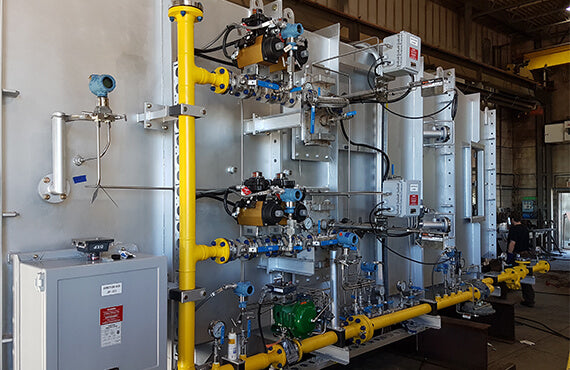In the realm of industrial applications, burner control systems have undergone a significant transformation over the years. From rudimentary mechanical systems to sophisticated, digitally integrated setups, the evolution has been nothing short of revolutionary. This article aims to delve into the intricacies of modern industrial burner controls, focusing on their efficiency, safety features, and innovative technologies.
Historical Context
To appreciate the advancements in modern burner controls, it's essential to understand their historical context. Traditional systems were primarily mechanical, relying on manual adjustments for fuel-to-air ratios and ignition timing. These systems were not only labour-intensive but also prone to human error, leading to inefficiencies and safety risks.
The Paradigm Shift: From Mechanical to Digital
The transition from mechanical to digital controls has been a game-changer in industrial settings. Digital systems offer unparalleled control, allowing for real-time adjustments and monitoring. This shift has been catalysed by the advent of the Industrial Internet of Things (IIoT), which enables seamless integration between different components of an industrial burner system.
Efficiency
-
Fuel-to-Air Ratio Control: Modern systems employ advanced algorithms to optimise the fuel-to-air ratio, ensuring maximum combustion efficiency.
-
Variable Frequency Drives (VFDs): These are used to control the speed of the combustion air fan, thereby reducing electrical consumption.
-
Data Analytics: Real-time data analytics provide insights into system performance, enabling predictive maintenance and reducing downtime.
Safety
-
Flame Monitoring: Advanced optical sensors and infrared cameras are used for continuous flame monitoring to prevent uncontrolled combustions.
-
Automated Shutdown: In case of any anomalies, modern systems are equipped with automated shutdown procedures to minimise risks.
-
Compliance: Digital systems are designed to comply with stringent safety standards such as the UK's BS EN 298:2012 and the international ISO 23551-1.
Innovation
-
Artificial Intelligence (AI): Machine learning algorithms are being incorporated to predict system failures and optimise performance.
-
Remote Monitoring: Cloud-based solutions allow for remote monitoring and control, providing flexibility and reducing the need for on-site personnel.
-
Energy Recovery: Some advanced systems are equipped with heat recovery units that capture waste heat for other industrial processes.
Conclusion
The modernisation of industrial burner controls is a testament to the rapid advancements in technology and engineering. These systems not only offer increased efficiency and safety but also pave the way for innovative solutions that could revolutionise industrial processes. As we move towards a more sustainable and digitised future, it is imperative for industries to adapt and invest in these advanced control systems.
References
- British Standards Institution. (2012). BS EN 298:2012 - Automatic Burner Control Systems.
- International Organization for Standardization. (2018). ISO 23551-1: Safety and Control Devices for Gas and/or Oil.

